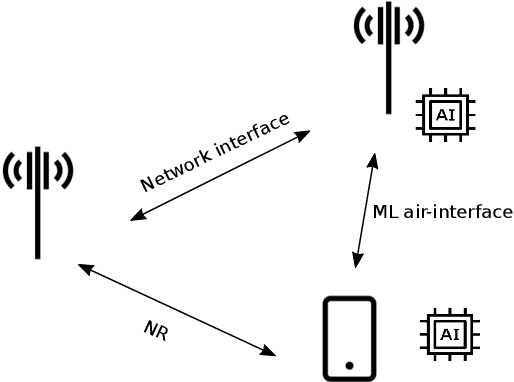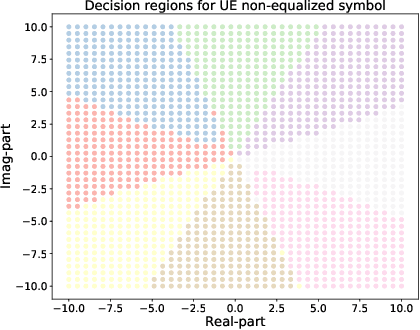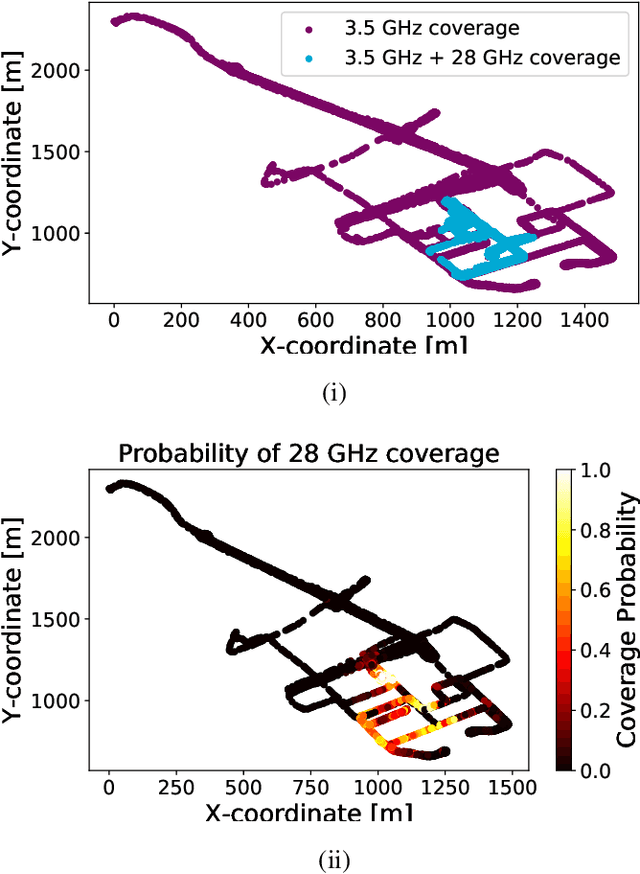Hugo Tullberg
Antenna Array Calibration Via Gaussian Process Models
Jan 18, 2023



Abstract:Antenna array calibration is necessary to maintain the high fidelity of beam patterns across a wide range of advanced antenna systems and to ensure channel reciprocity in time division duplexing schemes. Despite the continuous development in this area, most existing solutions are optimised for specific radio architectures, require standardised over-the-air data transmission, or serve as extensions of conventional methods. The diversity of communication protocols and hardware creates a problematic case, since this diversity requires to design or update the calibration procedures for each new advanced antenna system. In this study, we formulate antenna calibration in an alternative way, namely as a task of functional approximation, and address it via Bayesian machine learning. Our contributions are three-fold. Firstly, we define a parameter space, based on near-field measurements, that captures the underlying hardware impairments corresponding to each radiating element, their positional offsets, as well as the mutual coupling effects between antenna elements. Secondly, Gaussian process regression is used to form models from a sparse set of the aforementioned near-field data. Once deployed, the learned non-parametric models effectively serve to continuously transform the beamforming weights of the system, resulting in corrected beam patterns. Lastly, we demonstrate the viability of the described methodology for both digital and analog beamforming antenna arrays of different scales and discuss its further extension to support real-time operation with dynamic hardware impairments.
Cell-Free Data Power Control Via Scalable Multi-Objective Bayesian Optimisation
Dec 20, 2022



Abstract:Cell-free multi-user multiple input multiple output networks are a promising alternative to classical cellular architectures, since they have the potential to provide uniform service quality and high resource utilisation over the entire coverage area of the network. To realise this potential, previous works have developed radio resource management mechanisms using various optimisation engines. In this work, we consider the problem of overall ergodic spectral efficiency maximisation in the context of uplink-downlink data power control in cell-free networks. To solve this problem in large networks, and to address convergence-time limitations, we apply scalable multi-objective Bayesian optimisation. Furthermore, we discuss how an intersection of multi-fidelity emulation and Bayesian optimisation can improve radio resource management in cell-free networks.
Reinforcement Learning for Efficient and Tuning-Free Link Adaptation
Oct 16, 2020



Abstract:Link adaptation (LA) optimizes the selection of modulation and coding schemes (MCS) for a stochastic wireless channel. The classical outer loop LA (OLLA) tracks the channel's signal-to-noise-and-interference ratio (SINR) based on the observed transmission outcomes. On the other hand, recent Reinforcement learning LA (RLLA) schemes sample the available MCSs to optimize the link performance objective. However, both OLLA and RLLA rely on tuning parameters that are challenging to configure. Further, OLLA optimizes for a target block error rate (BLER) that only indirectly relates to the common throughput-maximization objective, while RLLA does not fully exploit the inter-dependence between the MCSs. In this paper, we propose latent Thompson Sampling for LA (LTSLA), a RLLA scheme that does not require configuration tuning, and which fully exploits MCS inter-dependence for efficient learning. LTSLA models an SINR probability distribution for MCS selection, and refines this distribution through Bayesian updates with the transmission outcomes. LTSLA also automatically adapts to different channel fading profiles by utilizing their respective Doppler estimates. We perform simulation studies of LTSLA along with OLLA and RLLA schemes for frequency selective fading channels. Numerical results demonstrate that LTSLA improves the instantaneous link throughout by up to 50% compared to existing schemes.
When Machine Learning Meets Wireless Cellular Networks: Deployment, Challenges, and Applications
Nov 08, 2019



Abstract:Artificial intelligence (AI) powered wireless networks promise to revolutionize the conventional operation and structure of current networks from network design to infrastructure management, cost reduction, and user performance improvement. Empowering future networks with AI functionalities will enable a shift from reactive/incident driven operations to proactive/data driven operations. This paper provides an overview on the integration of AI functionalities in 5G and beyond networks. Key factors for successful AI integration such as data, real-time network intelligence, security, and augmentation of human intelligence are highlighted. We also summarize the various types of network intelligence as well as machine learning based air interface in future networks. Use case examples for the application of AI to the wireless domain are then summarized. We highlight on applications to the physical layer, radio resource management, mobility management, wireless security, and localization.
Constrained Thompson Sampling for Wireless Link Optimization
Feb 28, 2019

Abstract:Wireless communication systems operate in complex time-varying environments. Therefore, selecting the optimal configuration parameters in these systems is a challenging problem. For wireless links, rate selection is used to select the optimal data transmission rate that maximizes the link throughput subject to an application-defined latency constraint. We model rate selection as a stochastic multi-armed bandit (MAB) problem, where a finite set of transmission rates are modeled as independent bandit arms. For this setup, we propose Con-TS, a novel constrained version of the Thompson sampling algorithm, where the latency requirement is modeled by a linear constraint on arm selection probabilities. Since our algorithm learns a Bayesian model of the wireless link, it can be adapted to exploit prior knowledge often available in practical wireless networks. Through numerical results from simulated experiments, we demonstrate that Con-TS significantly outperforms state-of-the-art bandit algorithms proposed in the literature. Further, we compare Con-TS with the outer loop link adaptation (OLLA) scheme, which is the state-of-the-art in practical wireless networks and relies on carefully tuned offline link models. We show that Con-TS outperforms OLLA in simulations, further, it can elegantly incorporate information from the offline link models to substantially improve performance.
 Add to Chrome
Add to Chrome Add to Firefox
Add to Firefox Add to Edge
Add to Edge